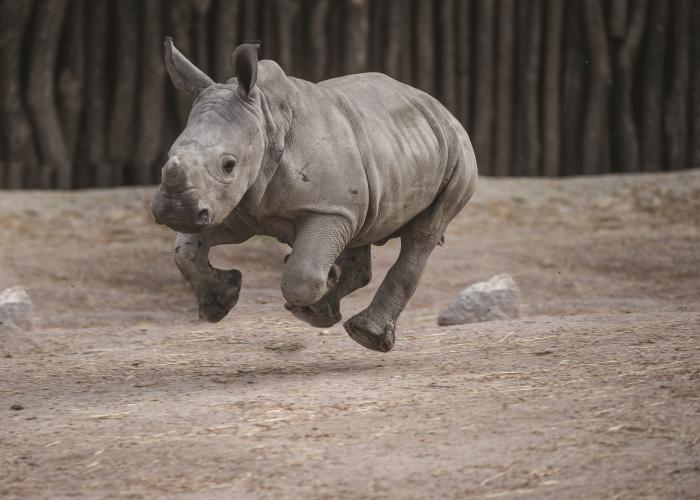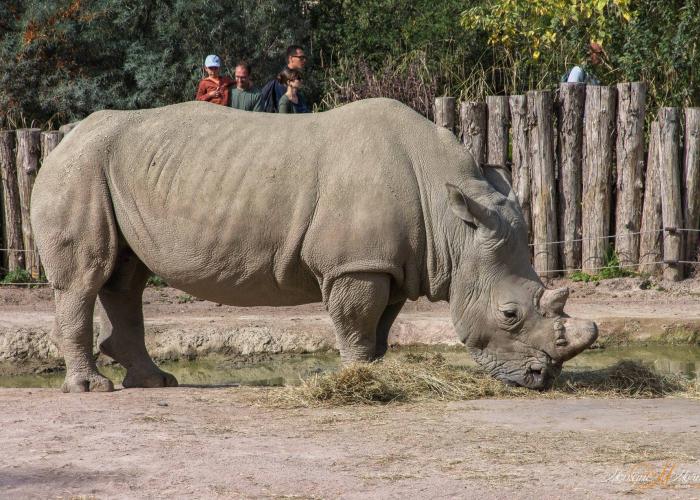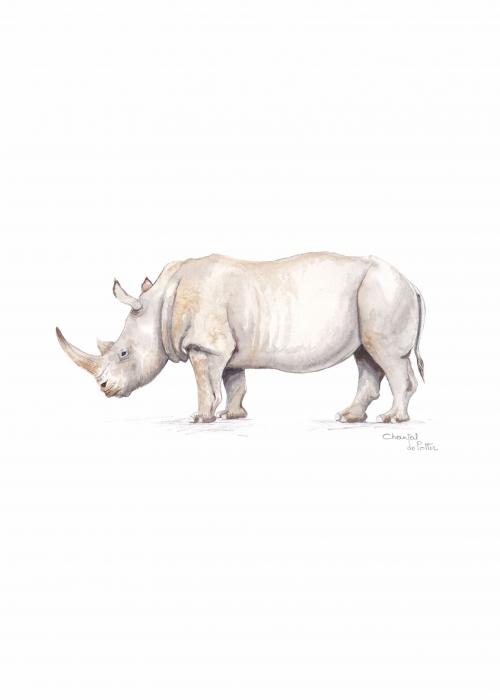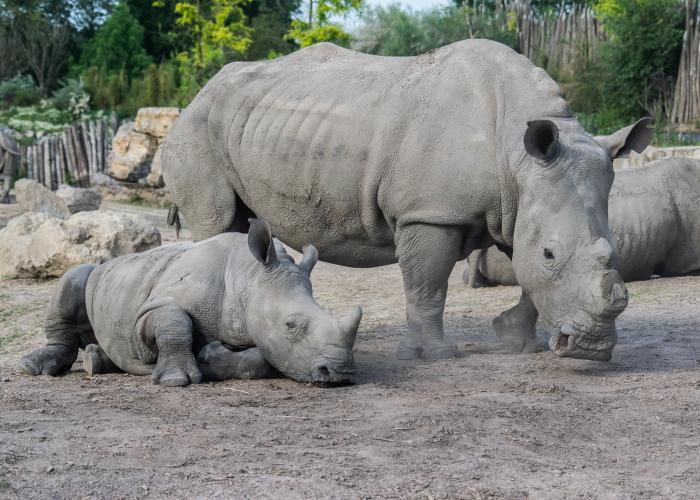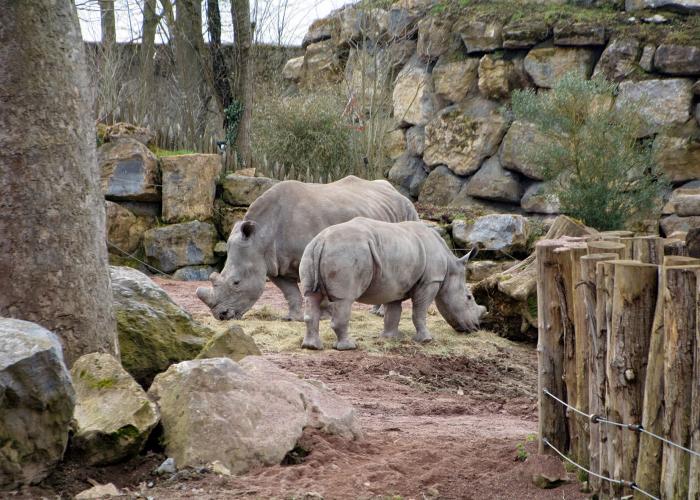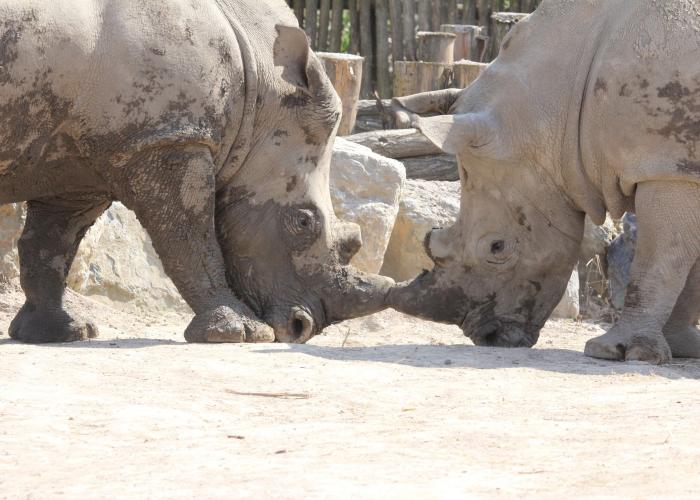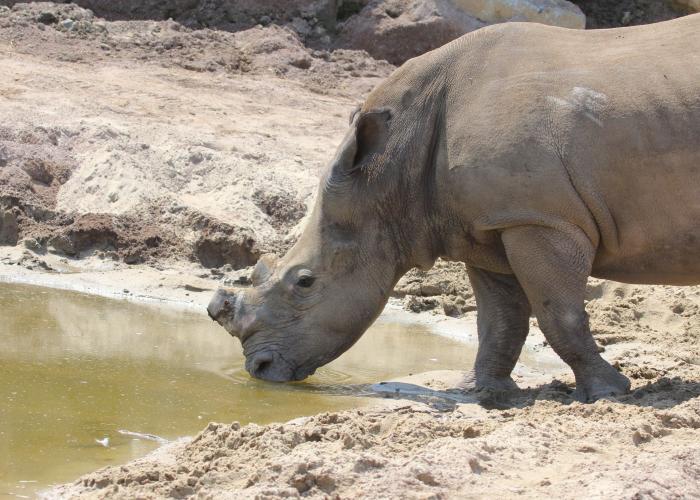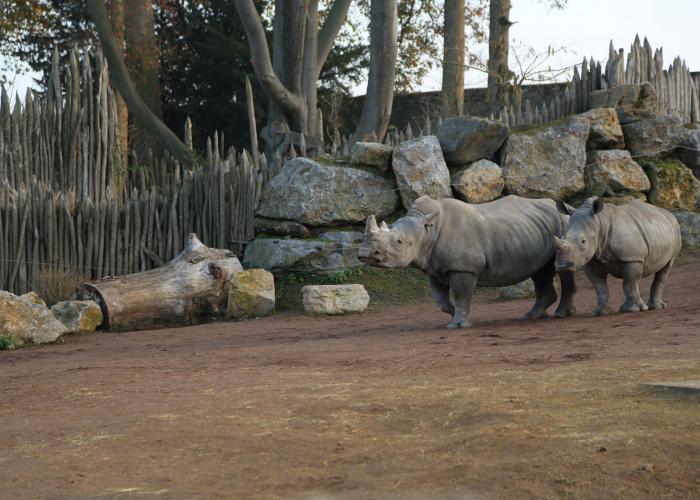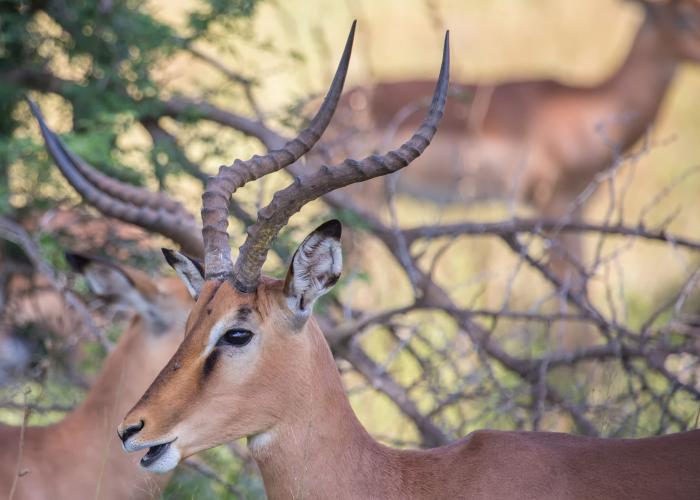White Rhinoceros
They are grey, but are called “white”
This is the second largest land mammal after the elephant. It can weigh up to 3 tons and be 4 metres long. It lives mainly on the savannas of Southern Africa because the Central African subspecies has virtually disappeared.
Its hide is grey but if it is called “white”, it is because of wrong translation! The lips of this animal are “wide’, called “wijd” in Dutch-Afrikaans: the adjective has been confused with “white” or “wit”, that is to say “white”!
Baby rhinos are born after a long 18-month gestation period and already weigh 30 kg!
The two horns of the African White Rhinoceros grow by approximately half a centimetre per month and they above all use them to clear brushwood from the vegetation so that they can browse.
These horns are made of keratin, like our nails and our hair, and while they have no curative properties, we ascribe them, wrongly, as traditional Asian medicine, which is why they are frantically poached (hundreds of animals per annum…).
This is why our rhinos, coming from a South African ranch, have had their horns sawn off in order to save their lives. Over here, they slowly grow back…
4 White Rhinoceros
- Jobi (male)
- Elie (female)
- Madiba (female)
- Kodjo (male)
A « Near threatened » species
- Name : White Rhinoceros
- Latin name : Ceratotherium simum
- Origin: Southern Africa, Northern Congo and South Sudan.
- IUCN-status : Near threatened
- Cites : Appendix I/II
